Atlanta tokiokai
Roger R. SeapyIntroduction
Atlanta tokiokai is a small species (to 2.5-3.0 mm). The shell is light yellowish-brown, and the inside of the outer lip is brown. The keel is tall and rounded in side profile. The spire has a globose shape with an apical angle of about 80°. The spire consists of about 5-1/2 whorls, with sutures that are very shallow and difficult to distinguish when the spire is viewed from the side. The spire bears prominent tubercles that are arranged in distinct spiral lines; in some cases they can be sufficiently elevated to give the appearance of spiral ridges. The inner wall of the spire (viewed with transmitted light) has radially-arranged lines that can be difficult to resolve because of the strongly developed surface sculpture. The spire whorls are decalcified internally, as in A. inclinata. On the left side of the shell the whorl adjacent to the umbilicus bears a prominent ridge, and between the ridge and the umbilicus the whorl is flattened. Eyes type b, operculum type c, and radula type II, with the number of tooth rows limited to about 60. The radula is small and ribbon-like, with a growth angle of about 9°, and the lateral teeth have an accessory cusp. The species has a cosmopolitan distribution in tropical to subtropical waters.Diagnosis
- Shell small; maximal diameter = 2.5-3.0 mm
- Shell light yellowish-brown; inside of outer lip brown
- Keel tall and rounded
- Spire shape globose, with an apical angle of about 80°
- Spire of about 5-1/2 whorls, with very shallow sutures
- Spire whorls decalcified internally
- Spire with prominent tubercles arranged in spiral rows
- Inner surface of spire with radially-arranged lines
- Whorl adjacent to umbilicus with prominent ridge; whorl surface flattened between ridge and umbilicus
- Eyes type b
- Operculum type c
- Radula type II
- Number of tooth rows in radula limited to about 60
- Radula small and ribbon-like, with growth angle of about 9°
- Lateral teeth bear an accessory cusp
Characteristics
- Shell
- Shell small, with a maximal diameter of 2.5 to 3.0 mm (Tesch, 1906 [as A. inclinata] = to 3.0 mm; Richter, 1990 = to 2.5-2.8 mm; Seapy, 1990 = to 2.6 mm).
- Shell coloration light yellowish-brown (see title illustration)
- Keel tall and rounded in side profile
 Click on an image to view larger version & data in a new window
Click on an image to view larger version & data in a new window Click on an image to view larger version & data in a new window
Click on an image to view larger version & data in a new window Click on an image to view larger version & data in a new window
Click on an image to view larger version & data in a new windowFigure. Shell of Atlanta tokiokai, with views of the right side (left) and the spire (right). Images from Richter (1990, figs. 1 and 13), modified by addition of scale bars (= 1.0 mm and 100 µm, respectively). © 1990 G. Richter
- Spire globose in shape, with an apical angle of about 80°
- Spire consists of about 5-1/2 whorls
- Spire sutures very shallow, with the result that when the spire is viewed from the side (see image above of larval shell) adjacent whorls are difficult to distinguish from each other
- Spire surface with well-developed tubercles (or punctae) that are arranged in spiral rows (click on first image below for detail); in some cases the tubercles can be raised and appear to form spiral ridges (click on second image below for detail)
 Click on an image to view larger version & data in a new window
Click on an image to view larger version & data in a new window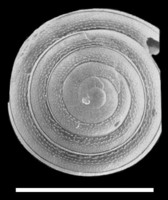
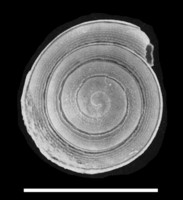
Figure. Spires of Atlanta tokiokai viewed dorsally. Spire on left with 5-1/8 whorls; that on right with 4-1/3 whorls. Images from Richter (1990, figs. 27 and 28, respectively), modified by addition of scale bars (= 0.5 mm). © 1990 G. Richter
- Inner wall of spire with radially-arranged lines (only visible using transmitted light). The lines can be difficult to resolve because of the prominent tubercles on the spire surface (click on image below for detail)
- Internal spire walls decalcified; as in A. inclinata (see A. inclinata page)
- Whorl adjacent to the umbilicus with a prominent ridge. The portion of the whorl medial to the ridge is flattened
 Click on an image to view larger version & data in a new window
Click on an image to view larger version & data in a new window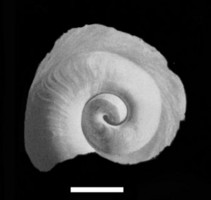
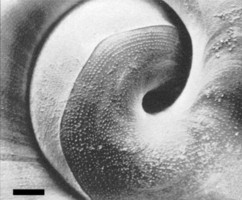
Figure. Left side of shell of Atlanta tokiokai, with views of left side (left) and umbilical region (right). Images from Richter (1990, figs. 2 and 16), modified by addition of scale bars (= 1.0 and 100 µm, respectively). © 1990 G. Richter
- Eyes type b
- Operculum type c
- Radula type II
- Number of tooth rows comprising radula about 60
- Radula small with a ribbon-like shape; growth angle about 9°
- Lateral tooth with an accessory cusp
 Click on an image to view larger version & data in a new window
Click on an image to view larger version & data in a new windowFigure. Section of radula from Atlanta tokiokai, viewed dorsally (from lower portion of radula in above image). Image from Richter (1990, fig. 31), modified by addition of label and scale bar (= 100 µm). © 1990 G. Richter
- Rachidian teeth (from adult portion of radula) about 20% narrower than in A. inclinata. In turn, the rachidian teeth in A. tokiokai are about 40% narrower than in either A. gibbosa or A. meteori
- Number of tooth rows comprising radula about 60
Comments
Atlanta tokiokai was described by van der Spoel and Troost in 1972. Their description was based on a single specimen collected from the Caribbean Sea. The side view of the shell (second image below) indicates that the specimen was an early stage juvenile; note the upturning of the last whorl that indicates the redirection of the axis of shell growth. One curious difference between the characterization of the whorl adjacent to the umbilicus by van der Spoel and Troost (see third image below) and the high magnification view by Richter (see above) is that the ridge on the whorl seen below appears to be weakly defined; as seen in A. inclinata (see A. inclinata species page).


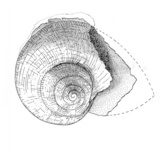
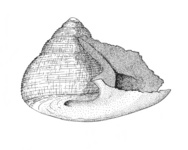
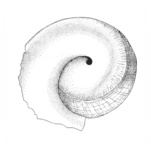

Figure. Drawings of the holotype shell of Atlanta tokiokai, from the right side (left), in side view (middle) and from the left side (right). Shell diameter = 2.3 mm. © 1972 van der Spoel & Troost
References
Richter, G. 1990. Zur Kenntnis der Gattung Atlanta (IV). Die Atlanta inclinata-Gruppe (Prosobranchia: Heteropoda). Archiv fur Molluskenkunde 119: 239-275.
Richter, G. and R. R. Seapy. 1999. Heteropoda, pp. 621-647. In: D. Boltovskoy (ed.), South Atlantic Zooplankton. Leiden: Backhuys Publ.
Seapy, R. R. 1990. The pelagic family Atlantidae (Gastropoda, Heteropoda) from Hawaiian waters: a faunistic survey. Malacologia 32(1): 107-130.
Tesch, J. J. 1906. Die Heteropoden der Siboga-Expeditie. Monographie 51, 112 pp. E. J. Brill, Leiden.
van der Spoel, S. and D. G. Troost. 1972. Atlanta tokiokai, a new heteropod (Gastropoda).
About This Page

California State University, Fullerton, California, USA
Correspondence regarding this page should be directed to Roger R. Seapy at
Page copyright © 2010
 Page: Tree of Life
Atlanta tokiokai .
Authored by
Roger R. Seapy.
The TEXT of this page is licensed under the
Creative Commons Attribution License - Version 3.0. Note that images and other media
featured on this page are each governed by their own license, and they may or may not be available
for reuse. Click on an image or a media link to access the media data window, which provides the
relevant licensing information. For the general terms and conditions of ToL material reuse and
redistribution, please see the Tree of Life Copyright
Policies.
Page: Tree of Life
Atlanta tokiokai .
Authored by
Roger R. Seapy.
The TEXT of this page is licensed under the
Creative Commons Attribution License - Version 3.0. Note that images and other media
featured on this page are each governed by their own license, and they may or may not be available
for reuse. Click on an image or a media link to access the media data window, which provides the
relevant licensing information. For the general terms and conditions of ToL material reuse and
redistribution, please see the Tree of Life Copyright
Policies.
- First online 01 July 2010
- Content changed 01 July 2010
Citing this page:
Seapy, Roger R. 2010. Atlanta tokiokai . Version 01 July 2010 (under construction). http://tolweb.org/Atlanta_tokiokai/28772/2010.07.01 in The Tree of Life Web Project, http://tolweb.org/




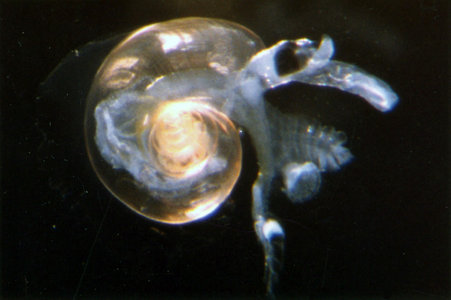
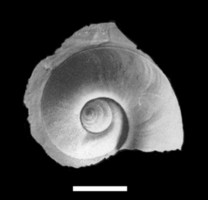
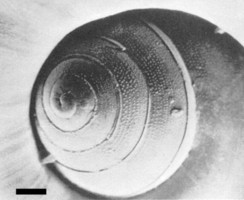
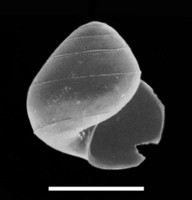
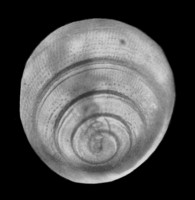
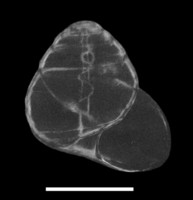

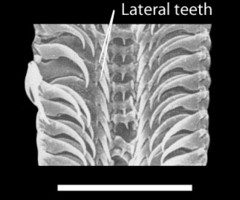

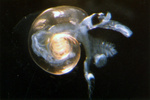


 Go to quick links
Go to quick search
Go to navigation for this section of the ToL site
Go to detailed links for the ToL site
Go to quick links
Go to quick search
Go to navigation for this section of the ToL site
Go to detailed links for the ToL site